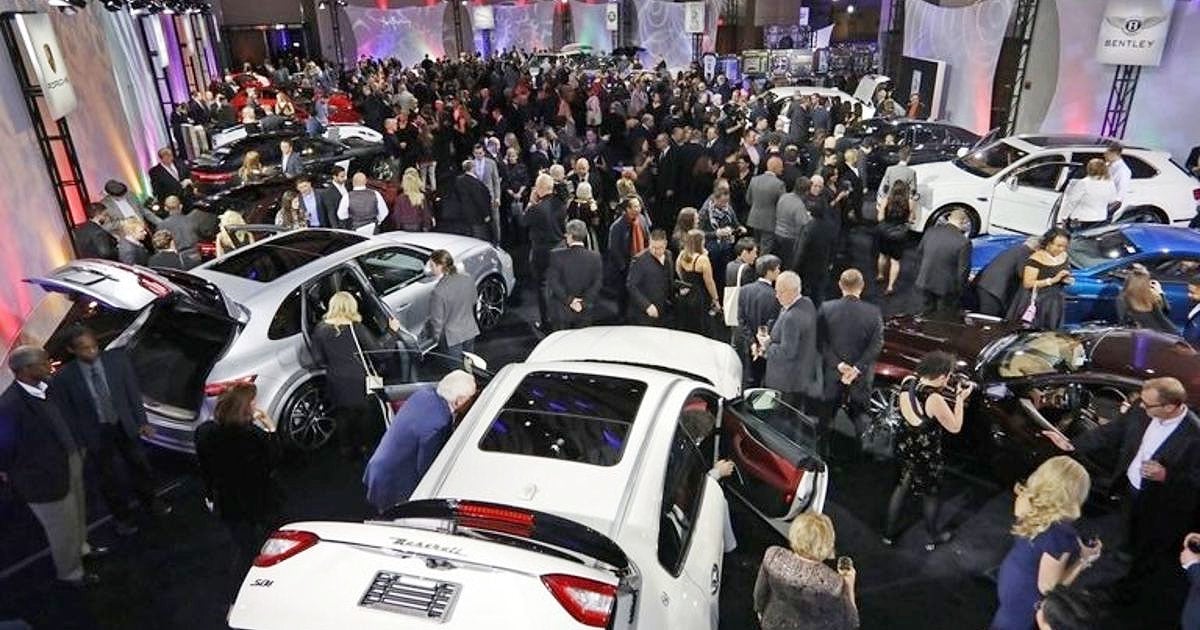
This month, the Detroit auto show beat back whispers of its potential demise with a bold press release promising that September’s event would have “double the number of brands participating.”
While it was good to get confirmation of the Motor City’s 2023 exhibition, the participation claim was dubious on the face of it. Upon further investigation, it’s simply not true.
Last year, there were 14 in-market auto brands with corporate displays: Six from Stellantis, four from GM, Ford’s two, plus Toyota and Subaru, both of which brought their B stands rather than their best-in-class A stands. For some reason, show organizers say they had 13 brands last year.
In either case, those numbers aren’t doubling, not with actual brands that are sold in the United States through dealerships.
(While some car enthusiasts would enjoy seeing Tesla, Rivian and other direct-to-consumer electric vehicle brands, it isn’t really in the interests of the Detroit Auto Dealers Association, which owns the show, to give those brands a friendly marketing platform.)
As Michael Martinez and his Automotive News colleagues reported last week, several brands have confirmed they are not going to have stands at this year’s show: Volkswagen, Audi, Jaguar, Land Rover, BMW, Mercedes-Benz, Porsche, Volvo, Kia, Hyundai, Genesis, Nissan, Subaru, Mazda, Lexus, Polestar and Lucid. Honda had already told us that auto shows have been delegated to local dealer groups.
Some of these have got to sting. Subaru was one of two Japanese brands at the show; now it’s out.
Hyundai, Genesis and Kia were probably the Detroit show’s best bet for adding important brands. Hyundai Group has been very active at other big U.S. shows — it and Stellantis have really been the pillars for New York and Los Angeles. But Detroit had no luck with those three Korean brands.
The absence of the (non-Stellantis) European brands is no surprise. Porsche in Los Angeles is about the only participation still going in this country.
A big part of the problem is that Detroit is a very hard market for international brands to conquest sales. A lot of car consumers work for the Detroit automakers or their suppliers. If they don’t have employee discounts, they can probably get a “friends and family” deal. Many others are simply loyal because of family history or regional pride.
Not that there isn’t any diversity of taste in Detroit, but the people who want a Honda or a BMW or a Tesla know how to find them.
Auto shows have been struggling. Most of the once-global shows are now regional, or just national: Paris is mostly French brands; Munich (formerly in Frankfurt) is mostly German. Only Japanese brands exhibit in Tokyo.
The pandemic didn’t help. First, it was important to not have large groups of people breathing on each other. Then, supply was so tight that brands didn’t need to spend money spurring demand: They already couldn’t keep up.
I don’t resent the Detroit auto show for its inability to attract foreign-based brands. Maybe it just has to become more of a local get-together of the U.S. auto industry where Ford, Chevy and Ram fans can see their favorite products and key domestic rivals. It’s fast becoming like a three-company picnic with a few industry neighbors tagging along.
The problem is misleading people about what the show is going to be like this year. If anyone believes them and expects to walk into an old-school international auto show with the whole market on display … well, they are going to be very disappointed.
In the claim to double the number of brands represented, the show organizers decided to include those that dealers bring from their lots, so Detroiters can at least see a little variety. The problem is that they had those kinds of displays last year. Sixteen dealer-supported brands were slated for the show, plus others — including Rivian — brought in as North American Car and Truck of the Year finalists.
But changing which stands you count doesn’t change who is participating. With Subaru pulling out and no one yet stepping in, this September’s show will very likely be less impressive than last year’s event, which was such a sad affair that the attendance figures were kept secret.
I’ve heard that there were forces pushing to return the show to January. That’s not a slam dunk by any stretch: It would continue to be overwhelmed in terms of news, auto CEOs and vehicle reveals by CES in Las Vegas. A move back to January would mean accepting it’s not a newsworthy show. But perhaps it could attract more consumers when there are fewer leisure options.
Former show Chairman Sam Slaughter once told me it would be harder to move the Detroit auto show out of January than to move Christmas. We’ve seen now that the show can be held in a different month — just not that it can be a September success.